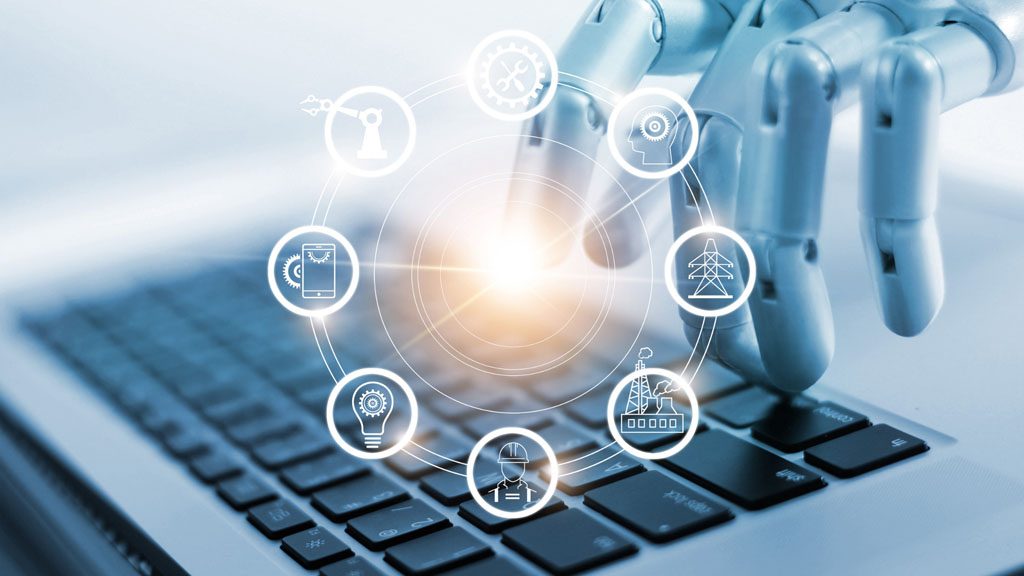
Everywhere you look, Artificial Intelligence (AI) is burrowing deeper into our lives and enterprises. In the overall IT Support Los Angeles Community, we have dealt with basic industrial automation for many years, and now that AI is getting ‘smarter’ all IT support and services providers have to wade conscientiously through the obstacle course of seamlessly integrating these new programs into corporate networks. Even some ‘unsmart’ apps do not play well with networks until the idiosyncrasies are worked out. If you are a small or midsized business incorporating AI into your business, your old run-of-the-mill IT services ‘guy’ will not do – you need to look into Managed IT Services.
What exactly is AI?
In its essence, AI enables machines and programs to learn, finding patterns in data and gaining insights that allow them to do their work faster and more efficiently. AI means different things to different businesses depending on the application, but the basis for all forms of AI is ‘Cognitive Technology’, and these come in a variety of forms.
At its root, cognition means “The mental action or process of acquiring knowledge and understanding through thought, experience and the senses.” As humans, we all do this – we see things, figure things out and apply what we’ve learned to further our short- or long-term goals. Ultimately, everything we learn and apply is related to our survival instinct.
In any business environment, an owner or CEO wants to learn how to beat the competition and rise to the top of the industry, and workers want to learn what they need to know to rise in the business hierarchy. In either case, the result keeps food on the table, ensuring our physical survival.
A Harvard Business Review study of 152 cognitive technology projects and found that they all fell into one of three categories:
1) Robotics & Cognitive Automation (71 projects)
Used for automating relatively simple digital and physical tasks. The ‘least smart’ of AI types.
2) Cognitive Insight (57 projects)
Algorithms detect and interpret patterns in data for analysis.
3) Cognitive Engagement (24 projects)
Most often used to interact with employees and customers who query a customer service site or automated phone or email system.
The level of ‘smartness’ directly corresponds to the amount of responsibility and/or interaction with humans involved in their processes. Implementing any form of AI usually means coordinating with the IT Support department or a Managed IT services provider to map out how these projects will interact with the existing network infrastructure, and what changes will have to be made to accommodate their integration. In a typical professional office, however, the IT services team has little if anything to do to accommodate the types of AI used.
Some AI applications that are commonly used in software, such as those elements in Quickbooks Online that perform repetitive accounting tasks, do not require any special attention from the IT support and services team. In the arena of Legal research, programs using AI to sort through mountains of data and legal suits to find those with relevant precedents have saved paralegals an incredible amount of time, with no need involvement from IT service providers. In Heavy industry and manufacturing, smart robots will typically need more integration and oversight with network systems, but by and large, AI presents small, if any, challenges to IT support.
How is AI being used today?
AI is everywhere and you don’t even see it. Google Search is a prime example: the algorithms figure out what you are looking for based on your query and search history; cars that brake and slow down when an impact seems likely; smart homes; digital personal assistants; online shopping – the list goes on.
Bots show up every day in programs you use. Chatbots in Microsoft Word enable you to click and have a computer voice read what you wrote back to you, just as voice-to-text on your phone writes what you say. Bots are completely taking over the spamming industry and they’re tweeting as well.
Does AI cause unemployment?
While there are already areas where robotics have replaced humans such as factories and assembly lines, those machines needn’t be ‘smart’ to take menial, repetitive tasks from humans. In terms of specifically AI empowered machines and programs, the tide is growing, especially in areas where it’s already happening and those where it soon will be.
AI replacing humans now:
1) Real Estate: Services are available now that cut out the realtor, with AI putting sellers in touch with buyers.
2) Delivery/Couriers: We already have robots and drones delivering items.
3) IT Support and Services: Every top-notch Managed IT Services provider has incorporated AI into their remote IT help desk to monitor and assess network anomalies, and perform routine, simple tasks. That, combined with clients’ use of AI, means less to do, meaning less IT support people needed.
Not here yet, but coming:
1) Healthcare: We still need nurses, but not for tasks such as ongoing health monitoring – devices can record and isolate important data about a patient’s condition with only minimal human involvement. Doctors can then evaluate physical changes.
2) Education: Virtual teaching assistants are becoming more commonplace, helping students much like a human teacher.
3) E-Commerce. AI programs easily take and expedite orders, arrange delivery, and collect payment.
4) Transportation: Like it or not, driverless vehicles are gaining ground. What’s unsure is how a human motorist will feel driving next to a tractor-trailer with nobody sitting in the driver’s seat.
Take a look at any industry and it won’t be difficult to spot jobs that a machine or program can do more efficiently and at less cost than a human – then watch as those jobs go away.
Is AI a threat to human society?
There is no white-washing the fact that it’s possible. The old saying ‘garbage in, garbage out’ can have much harsher ramifications if AI applications have been poorly designed. They can pose safety risks to humans who work with them or they can be maliciously hacked to cause havoc. If weapons systems are integrated with flaws in the design, it could lead to disastrous results.
Only in Science Fiction does trying to unplug an Intelligent computer result in the computer killing the un-plugger to ensure its survival. Although AI machines are programmed to be task-completion oriented, the intelligence we have programmed into them only gives the machines the means to learn and complete the goals we set for them, but not to develop goals of their own.
Machines do not have a survival instinct – they have programming. To boil down a complex subject into simple terms: Our own survival instincts came about by an evolutionary process, not because a programmer typed in an ambiguous code that the machine uses to feel danger and a need for self-preservation.
How will AI change the future in society?
Just examine human nature and you will see the types of changes we’re looking at. Humankind will not be happy just to have AI doing menial tasks. The military is certainly looking at robot soldiers – the strike drones are still human-controlled, but for how long? Since Doctors already use monitoring devices on their patients, how long will it be before machines are performing surgery?
Law enforcement has already greatly benefitted from facial-recognition technology, and as more CCTV cameras show up in cities, criminals will soon be found as soon as they pop their head out of a doorway.
Think of any industry and you will see that higher and higher level jobs will be taken over by IA. Will this turn us into the Eloi from H.G. Wells’ The Time Machine, just lying about in the sun? Use your knowledge of human nature to ponder the likelihood of that.
I’m afraid I have to cut this blog short – the neighbor’s robot is out there trying to steal my car… again.


